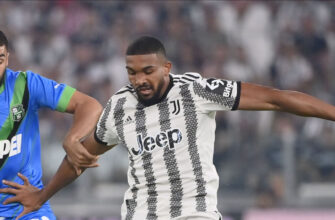In the vibrant tapestry of North American football, a significant strategic re-engineering has taken place, not on a drafting table, but on the very pitch itself. The Leagues Cup, an audacious interleague competition pitting Major League Soccer (MLS) against Mexico`s Liga MX, has returned with a comprehensively revamped format. This new iteration promises heightened drama, intensified rivalries, and a definitive answer to the perennial question: which league truly reigns supreme on the continent?
A Continental Vision: Beyond Domestic Borders
For years, the footballing landscape of North America has been primarily defined by domestic battles. Yet, the ambition has always stretched further. The Leagues Cup is more than just another trophy to be won; it’s a deliberate initiative to forge a stronger continental identity, elevate the competitive standards of both leagues, and ultimately, to serve as a crucible for talent in anticipation of future global showcases, not least the FIFA World Cup 2026 co-hosted across the region.
This tournament is a bold declaration of intent, seeking to crown a true North American champion. It presents a fascinating test of tactical ingenuity from the MLS against the passion and technical flair often associated with Liga MX. It`s a rivalry forged on the field, with the potential to define an era of regional football.
The New Rules of Engagement: An Exclusive Gauntlet
Gone are the days of a sprawling, all-inclusive tournament. The Leagues Cup now introduces a more exclusive and rigorous qualification process. Only the top nine teams from each MLS conference, alongside 18 participants from Liga MX, earn a coveted spot in this 36-team battle royale. This shift signals a move towards higher stakes from the outset, ensuring that every match carries significant weight. For instance, expansion side San Diego FC found themselves making their Leagues Cup debut, stepping in due to the Vancouver Whitecaps` commitments in other continental and national competitions.
Navigating the Group Stage Puzzle
The initial phase is where the strategic nuances truly unfold. While MLS clubs face off against their Liga MX counterparts, the standings are uniquely managed: each league maintains its own separate table. This means that a team could theoretically win all its matches but still miss the knockout stages if other teams within its own league`s table boast a superior goal difference or more regulation wins. It`s a system meticulously designed to keep every minute pulsating with consequence.
- Inter-League Play: Clubs from MLS will exclusively compete against Liga MX sides during the group stage.
- Dual Standings: Teams are ranked within their respective league tables (MLS vs. Liga MX).
- Qualification: The top four teams from each league`s table advance to the quarterfinals, irrespective of their comparative points total against teams from the opposing league.
- No Draws: Matches cannot end in a tie. If scores are level at full time, a penalty shootout ensues.
- Regulation win: 3 points
- Penalty shootout win: 2 points
- Regulation draw (loss in shootout): 1 point
The Road to Glory: Knockout Phase & Tiebreakers
Following the intense group stage (running from late July to early August), the tournament swiftly transitions into a direct knockout bracket. Quarterfinals, semifinals, and the grand final — culminating in late August — will determine the ultimate champion. The stakes are immense, with direct berths into the prestigious Concacaf Champions Cup on the line for the top finishers.
In the event of points parity in the group stage, a clear set of tiebreakers ensures fairness and continued drama:
- Total wins in regular time.
- Superior goal differential.
- Most goals scored.
- Fewest goals conceded.
- Fair play record (based on yellow and red card accumulation).
- Drawing of lots (a final, albeit unlikely, resort).
The Player`s Predicament: Spectacle vs. Strain
While the new format promises enthralling football for fans, it casts an intriguing light on the physical demands placed upon the players. The MLS season pauses, not for rest, but for another high-intensity cup competition. For teams like Inter Miami, featuring global icons such as Lionel Messi and Jordi Alba, this marks their third cup competition of the season. One might politely suggest that the definition of `rest` appears to be under significant review in certain quarters.
Indeed, the very players who were, at one point, reportedly suspended for prioritizing rest over an All-Star game commitment now find themselves navigating a dense fixture list. The question lingers: will the pursuit of continental glory, coupled with domestic league demands, lead to a grand spectacle, or a grueling gauntlet that tests the limits of endurance?
Beyond the Trophy: The Legacy of Leagues Cup
The Leagues Cup is more than a sporting event; it`s a strategic investment in the future of North American football. It offers unparalleled bragging rights, a chance for emerging talents to shine on an international stage, and a crucial barometer for the progress of both leagues. As the continent gears up for the 2026 World Cup, events like the Leagues Cup become vital testing grounds, not only for players and teams but for the infrastructure and fan engagement capabilities of the entire region.
Whether this reimagined tournament fully delivers on its promise of consistent, high-stakes drama and elevates the collective standard remains to be seen. But for now, the stage is set, the teams are ready, and the battle for North American football supremacy has just begun.






